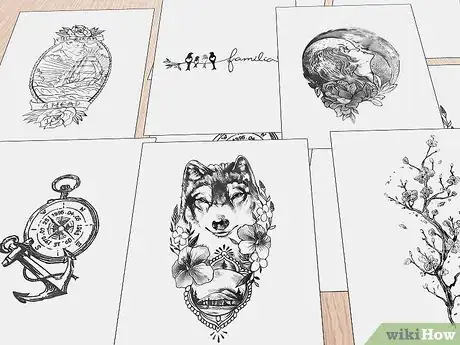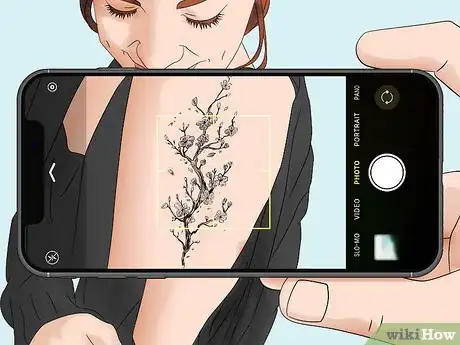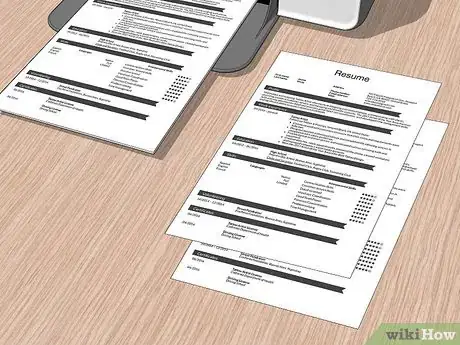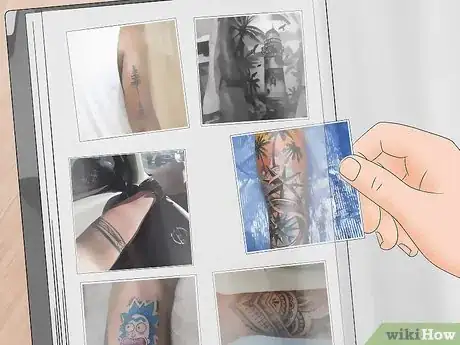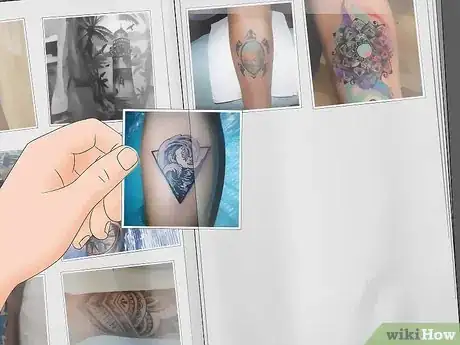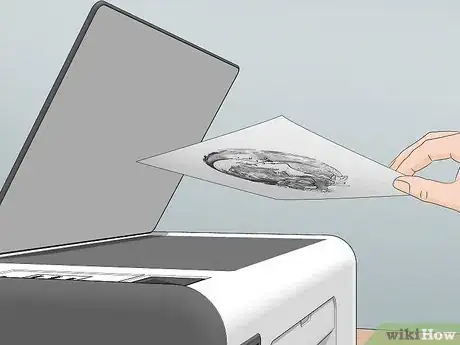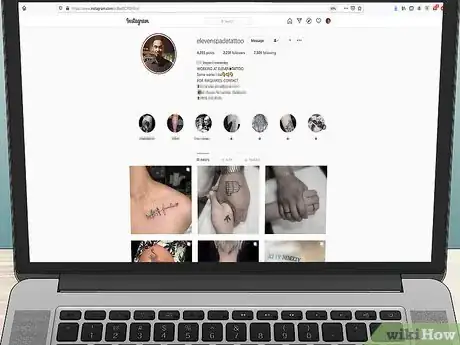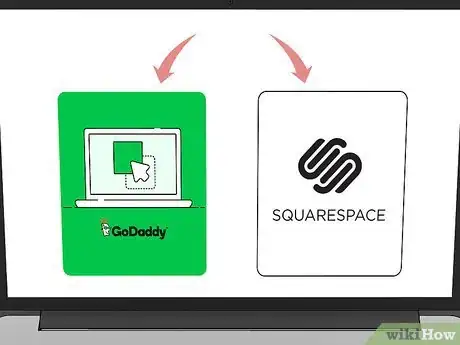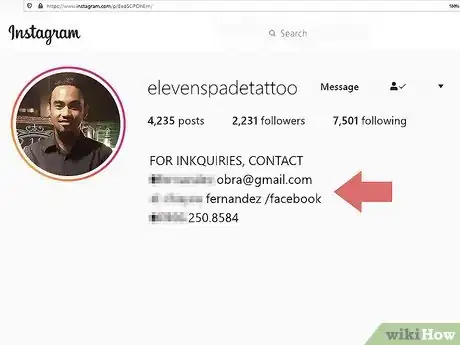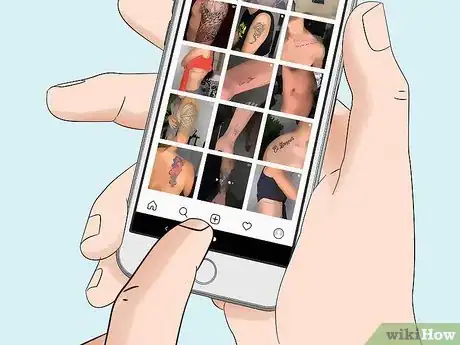This article was co-authored by Grant Lubbock. Grant Lubbock is a Tattoo Artist and Co-Owner of Red Baron Ink, a tattoo salon based in New York City. Grant has over 10 years of tattooing experience and he specializes in neo-traditional, black/grey, and color tattoos. Red Baron Ink's main goal is for each tattoo coming out of their studio to be one of a kind custom pieces that will look good throughout a lifetime.
There are 13 references cited in this article, which can be found at the bottom of the page.
This article has been viewed 105,384 times.
Whether you’re trying to become a tattoo artist or you’re an established artist trying to attract customers, a professional portfolio is a great way to showcase your talent and your art. Not sure how to get started? We’re here to help walk you through the best ways to get your materials together, assemble your portfolio, and showcase your work online. Here are 15 tips to get you on your way!
Steps
Pick out a variety of your best artwork.
-
This helps show your talent and abilities across different styles and mediums. You want to show any prospective bosses or customers your very best work, so gather your most polished and highest quality drawings, sketches, and artwork.[1] X Research source
- For example, if you’re really great at sketching with charcoal, choose your best pieces to include in your portfolio, but also include your best watercolor or acrylic paintings as well.
- Avoid including any unfinished pieces or pieces that you aren’t satisfied with. Your portfolio should display art that you’re proud of.
Take pictures of any tattoos that you’ve done.
-
This is a great way to showcase your work in your portfolio. If you’ve already tattooed people, including high-quality pictures of your work will show prospective employers and clients your talent and ability. Collect all of the pictures of tattoos that you’ve completed so you can add them to your portfolio.[2] X Research source
- It’s often not a requirement for you to have completed tattoos on people to try to become an apprentice at a tattoo shop.
- Ask anybody tattooed to send you photos of the healed tattoo. Oftentimes, tattoos look much better after the skin has fully healed, especially for designs with lots of colors and detail.[3] X Research source
Create a few flash sheets of different tattoo styles.
-
This really helps show off your range. Most tattoo shops need artists that are able to do a variety of different styles so they’re able to serve a wide range of customers. When you’re gathering your materials for your portfolio, take some time to whip up a few flash sheets, which are single pages with 4-5 small pieces of art on them. Make flash sheets of different styles to show your versatility as an artist.[4] X Research source
- A flash sheet is a page of several tattoo designs that people can use to choose a tattoo from.
- Make flash sheets of some of the standard tattoo styles such as American traditional, black and white, Japanese style, and lettering, which is essentially calligraphy.
- Use a single flash sheet to display your ability to do a certain style. For instance, you could have a sheet that includes 4-5 small pieces done in American traditional style, or a sheet with different styles of lettering.
Print out any digital designs that you’ve made.
-
Showing your digital art proficiency makes you look like a more valuable asset to a tattoo shop. Because many tattoo artists will work with customers on coming up with a design on a computer, if you have any digital art that you’ve created, be sure to include it.[5] X Research source
- Be sure you can explain how you created the digital art, including your original idea and the computer programs you used to create it.
Update your resume and print out several copies.
-
Add your resumes to the back of your portfolio for easy access. Make sure your resume is current, includes all of your contact information, and fits neatly onto 1 page. Print out several copies to keep in your portfolio so you can hand them out to potential employers or customers whenever you need them.[6] X Research source
- If you don’t have a resume, make one!
- Keep your resume to 1 page so it’s easier for people to hang onto it.
Choose a portfolio case with clear sheets to hold your artwork.
-
A professional portfolio will make your work look more impressive and legitimate. Choose one with clear sheets so it holds your artwork and is easily visible.[7] X Research source
- Look for professional portfolio cases at art supply stores or search online for one you can order.
- Make sure you have enough clear pages to hold your artwork.
Slide your artwork into the plastic portfolio sheets.
-
This is a great way to organize your artwork for easy viewing. Open the top of the plastic sheet and gently slide your artwork or pictures into it so there aren’t any folds or creases. Insert all of your art and pictures into the sheets so they’re neat and tidy.[8] X Research source
- Avoid squeezing multiple pieces into a sheet or they may get bunched up and wrinkled.
Organize your artwork by style.
-
This makes it easier to flip through them. Keep similar types of artworks together so the portfolio is organized in a way that makes sense. People flipping through your portfolio will be able to navigate it more easily and check out your range and versatility as an artist.[9] X Research source
- For example, keep styles such as American traditional and sketches that you’ve done together in their own sections.
Tip: Add tabs that label the sections so it’s even easier for people to flip through them. For instance, a tab for the section of lettering and a tab for the section of pictures of completed tattoos would make your portfolio even more professionally organized.
Display your portfolio in your tattoo parlor if you’re already a working artist.
-
A professional portfolio makes you look more credible to customers. If you’re making a portfolio to keep in your tattoo shop so customers can flip through it, place it in an easy-to-access location such as on the front counter or in the waiting area. Encourage waiting customers to check out your work and see if there’s anything that they like.[10] X Research source
Update your portfolio anytime you create a new design or tattoo.
-
This helps give people a view of the wide range of work that you’ve done. Make it a habit to update your portfolio anytime you tattoo somebody or come up with a new design that you like.[11] X Research source
- Snap a picture of a tattoo whenever you finish it and ask people to send you a photo of the tattoo once it’s healed.
- You could even add a section titled something like, “New Designs” so people can flip through your latest work and look at designs that haven’t been tattooed on anybody yet.
Scan your artwork.
-
Scanning your art lets you upload the files digitally. Use a scanner to digitally scan all of your best tattoo designs, sketches, and artwork so you can add them to your online portfolio. Save the files onto your computer so you can easily upload them and have a copy saved in case you need it for something else in the future.[12] X Research source
- Try to get the highest quality image possible by making sure the scanner glass is clean and the artwork is completely flush against the surface.
- You can also use the high-quality camera of a smartphone to snap photos of your artwork as well as any tattoos that you’ve actually completed for your portfolio.
Create an Instagram account dedicated to your tattoo work.
-
This is a great way to showcase your talent and range. To be a successful tattoo artist, you need to do more than simply work at a tattoo shop. You need to have customers seek you out and using social media to broadcast your work is a great way to get people to notice you and build your personal brand. Post regular content and images of your latest work so people get a sense of your style and want to go to you for their tattoos.[13] X Research source
- Instagram has become a big resource for many tattoo artists to showcase their work as well as announce openings and book clients.
- Other social media sites, such as Tumblr and Pinterest, allow you to post lots of images of your artwork and write blog posts that let people get to know you, which is a great branding tool.
- If you don’t have an Instagram, no worries! You can make one in about 5 minutes.
Create a professional website for yourself.
-
A website is a valuable tool for you to use as an online portfolio. Visit a domain name and website host website and make a site with a branded domain URL and a photo gallery that includes images of your artwork as well as any tattoos that you’ve done. Include a contact form so potential clients or employers can use your website to get in touch with you about doing tattoo work.[14] X Research source
- For instance, your website could be called johnsmithtattoos.com and you can include on your resume and social media so people can find your work easily.
- Include a section for customers to upload photos and testimonials of tattoos that they got from you.
- Popular website hosting sites include GoDaddy.com, Squarespace, HostGator, and Google Sites.
- There are also online portfolio platforms you can use if you don't want to make your own website.[15]
X
Expert Source

Tattoo Artist & Co-Owner, Red Baron Ink Expert Interview. 22 October 2019.
Use an online contact form to book appointments and answer inquiries.
-
This gives people a way to reach you even if you’re busy or unavailable. Link the contact page to your email so you’re able to respond to people’s questions and schedule appointments.[16] X Research source
Add to your online portfolio often.
-
Regular updates can boost potential customer engagement. Update your Instagram and website with new photos of designs and tattoos that you’re working on or have already completed. Adding new content regularly will keep your work out there so people are more likely to come across it and potentially book an appointment with you.[17] X Research source
- Anytime you’re working on something new, snap some pictures of it so you have content you can use.
- You can also use content like funny or interesting memes to post to your Instagram so you’re updating it regularly.
Expert Q&A
-
QuestionWhat size should a tattoo portfolio be?
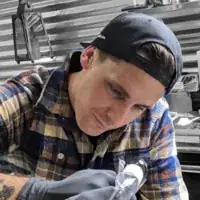 Grant LubbockGrant Lubbock is a Tattoo Artist and Co-Owner of Red Baron Ink, a tattoo salon based in New York City. Grant has over 10 years of tattooing experience and he specializes in neo-traditional, black/grey, and color tattoos. Red Baron Ink's main goal is for each tattoo coming out of their studio to be one of a kind custom pieces that will look good throughout a lifetime.
Grant LubbockGrant Lubbock is a Tattoo Artist and Co-Owner of Red Baron Ink, a tattoo salon based in New York City. Grant has over 10 years of tattooing experience and he specializes in neo-traditional, black/grey, and color tattoos. Red Baron Ink's main goal is for each tattoo coming out of their studio to be one of a kind custom pieces that will look good throughout a lifetime.
Tattoo Artist & Co-Owner, Red Baron Ink It should be pretty sizable! Aim to showcase at least 15-20 of your best pieces.
It should be pretty sizable! Aim to showcase at least 15-20 of your best pieces.
Warnings
- Be careful about including personal or financial information on your social media and website to reduce your risk of identity theft.⧼thumbs_response⧽
You Might Also Like
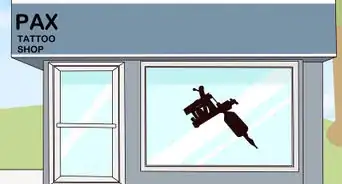







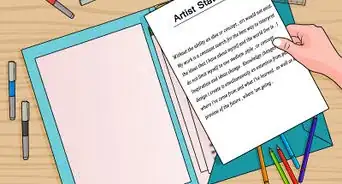





References
- ↑ https://youtu.be/ud1cIuEmvyI?t=100
- ↑ https://youtu.be/j7EPEvsr_zA?t=70
- ↑ https://youtu.be/j7EPEvsr_zA?t=70
- ↑ https://youtu.be/MWrhzhN7WPE?t=144
- ↑ https://youtu.be/MWrhzhN7WPE?t=177
- ↑ https://www.theartcareerproject.com/become/tattoo-artist/
- ↑ https://youtu.be/j7EPEvsr_zA?t=282
- ↑ https://youtu.be/o20HvT-TrTI?t=93
- ↑ https://youtu.be/o20HvT-TrTI?t=124
- ↑ https://youtu.be/j7EPEvsr_zA?t=315
- ↑ https://www.theartcareerproject.com/become/tattoo-artist/
- ↑ https://artanddesigninspiration.com/step-by-step-directions-to-scan-your-artwork/
- ↑ https://www.cnbc.com/2020/01/17/how-instagram-revolutionized-the-tattoo-industry.html
- ↑ https://youtu.be/wTHnPTTZv_o?t=235
- ↑ Grant Lubbock. Tattoo Artist & Co-Owner, Red Baron Ink. Expert Interview. 22 October 2019.
- ↑ https://youtu.be/wTHnPTTZv_o?t=235
- ↑ https://www.cnbc.com/2020/01/17/how-instagram-revolutionized-the-tattoo-industry.html
About This Article

If you’re a budding tattooist, an impressive portfolio will go a long way to helping you succeed. Although you want to highlight your best work, make sure you include a range of different styles to show that you’re a versatile artist. Common styles include American traditional, black and white, Japanese style, and lettering. If you’ve already inked people, it’s best to show real images of tattoos you’ve done, since these will highlight your tattooing skills too. Make a physical portfolio to take to job interviews or display in your own parlour. Order it by style so people can easily find designs they like. You should also design a website to host your portfolio, since a lot of people find tattooists online. If you don’t already have an Instagram for your tattoos, now’s a great time to start one. For more tips from our Tattooist co-author, including how to set up a contact form on your website, read on!
